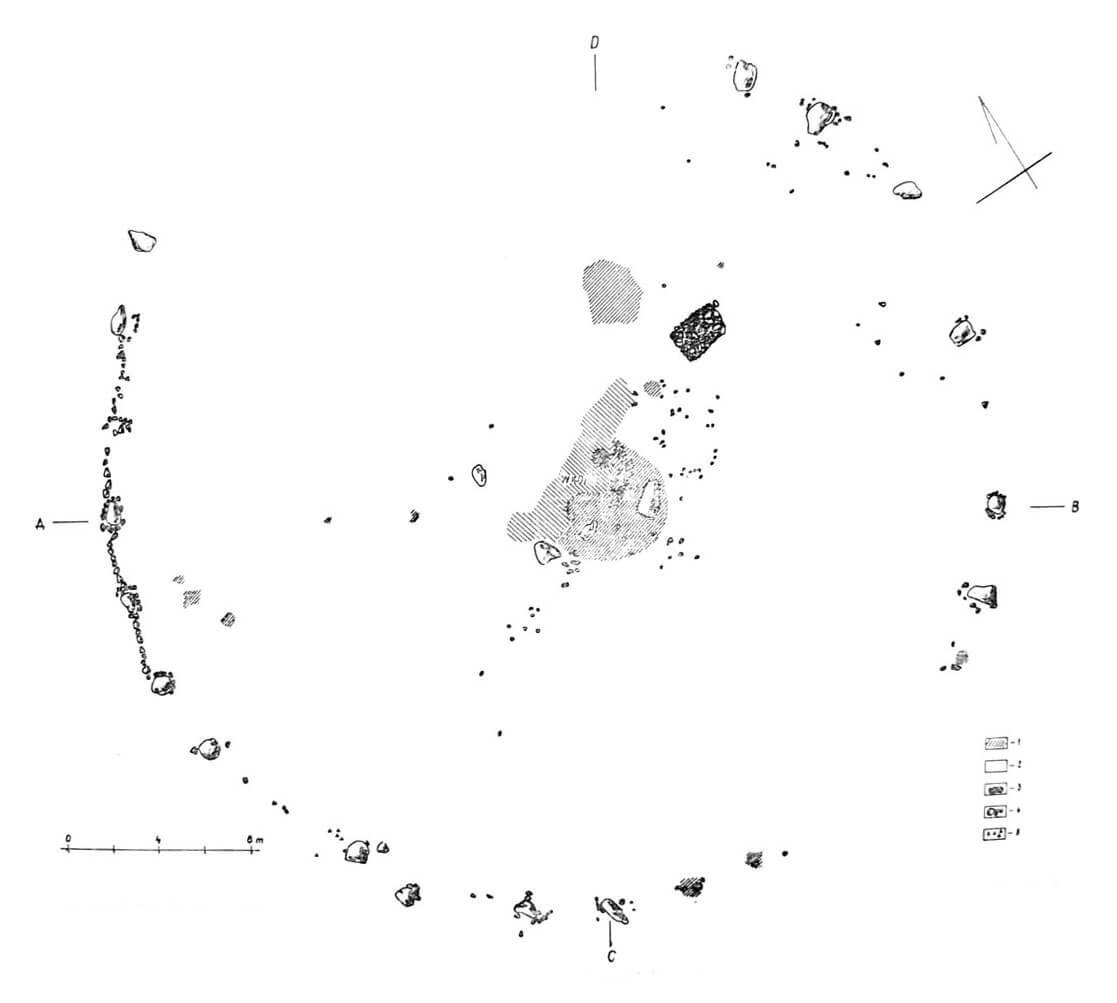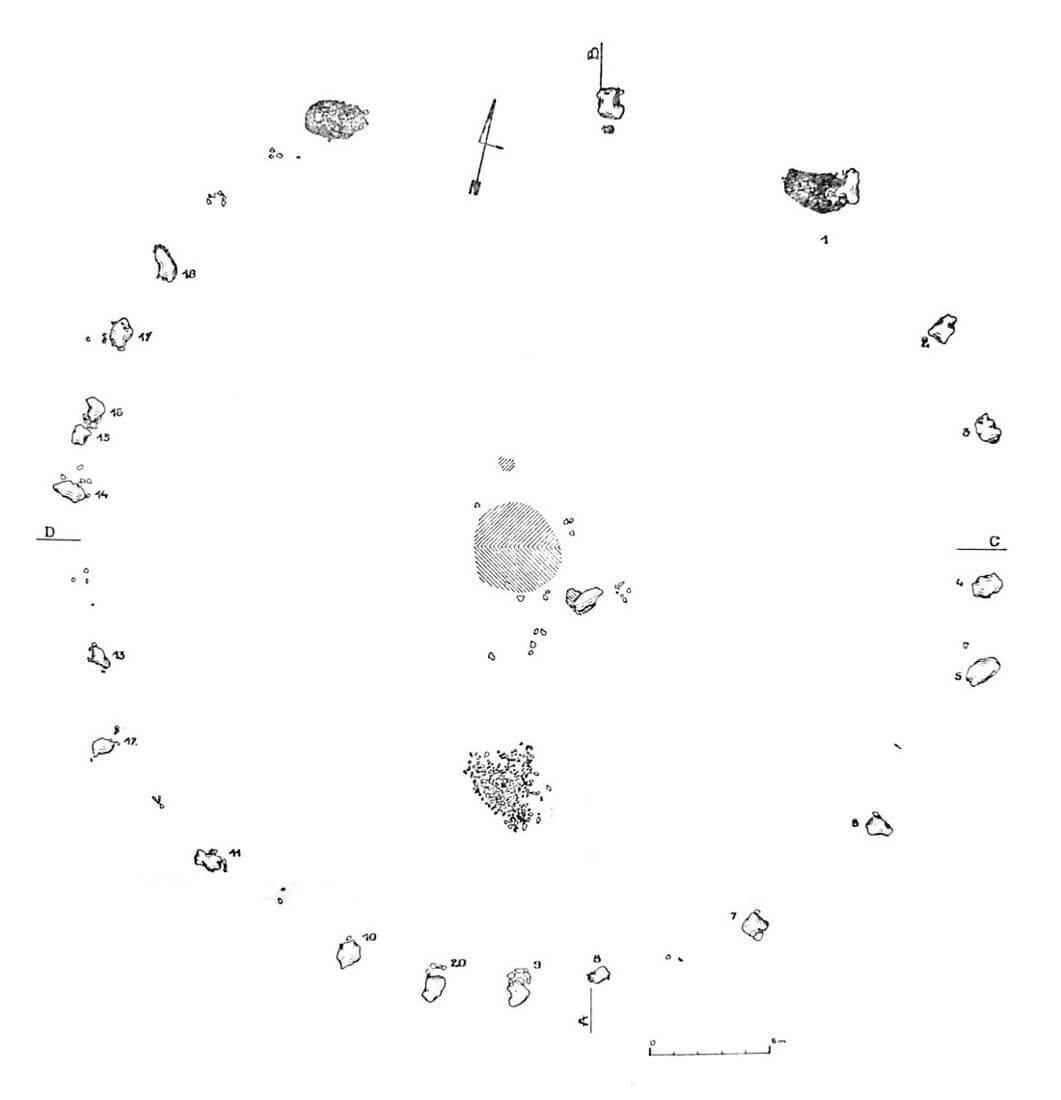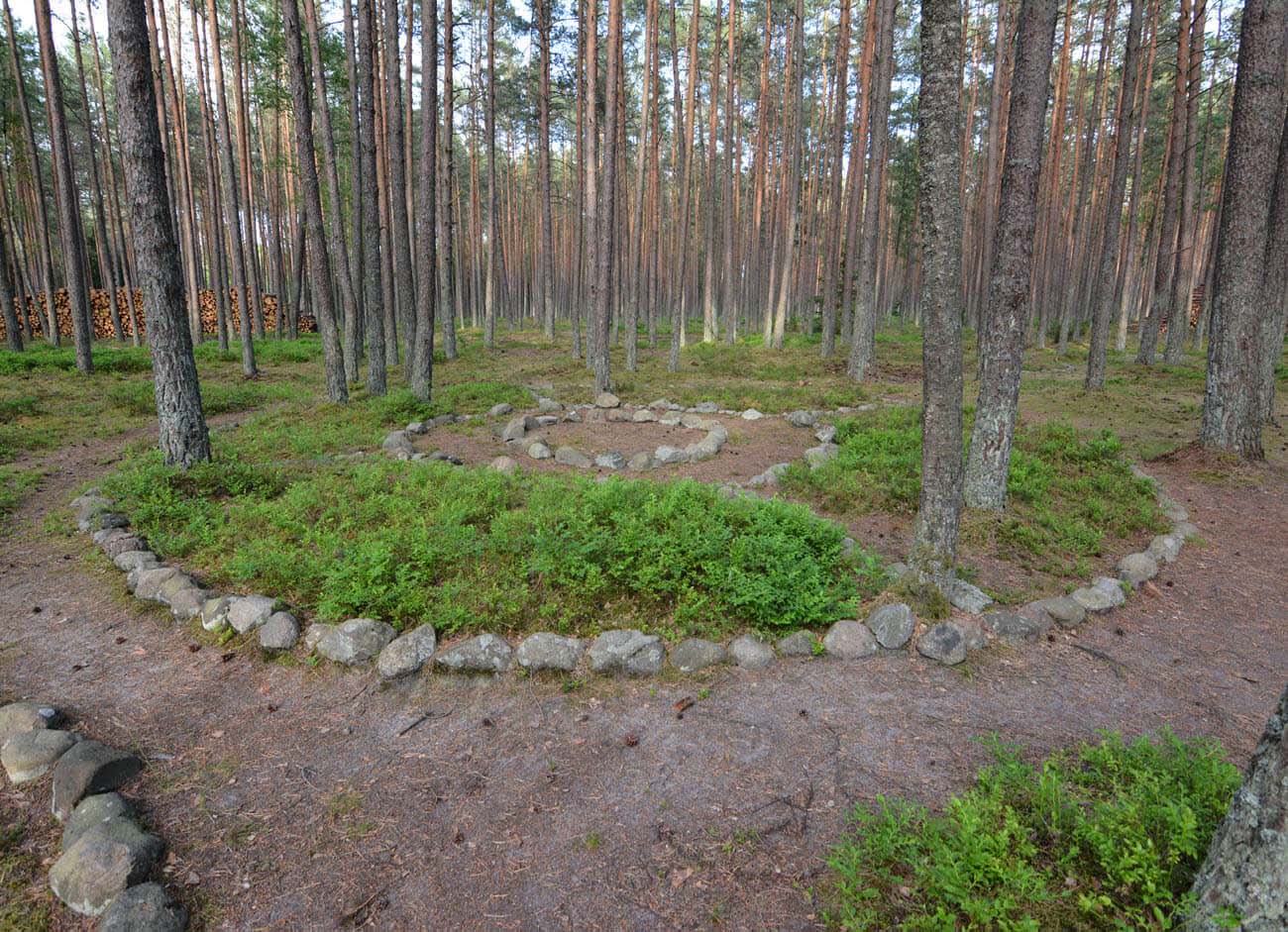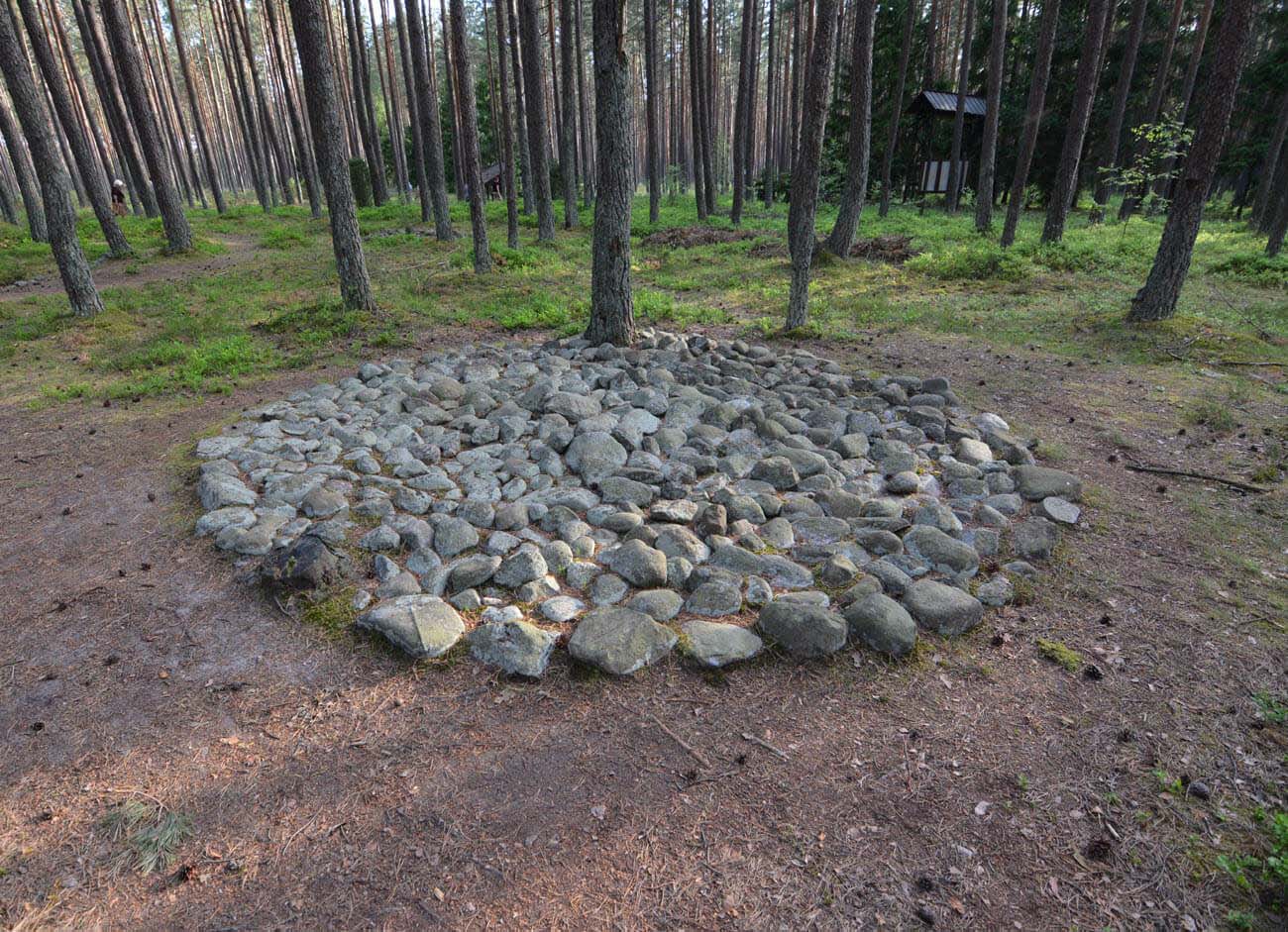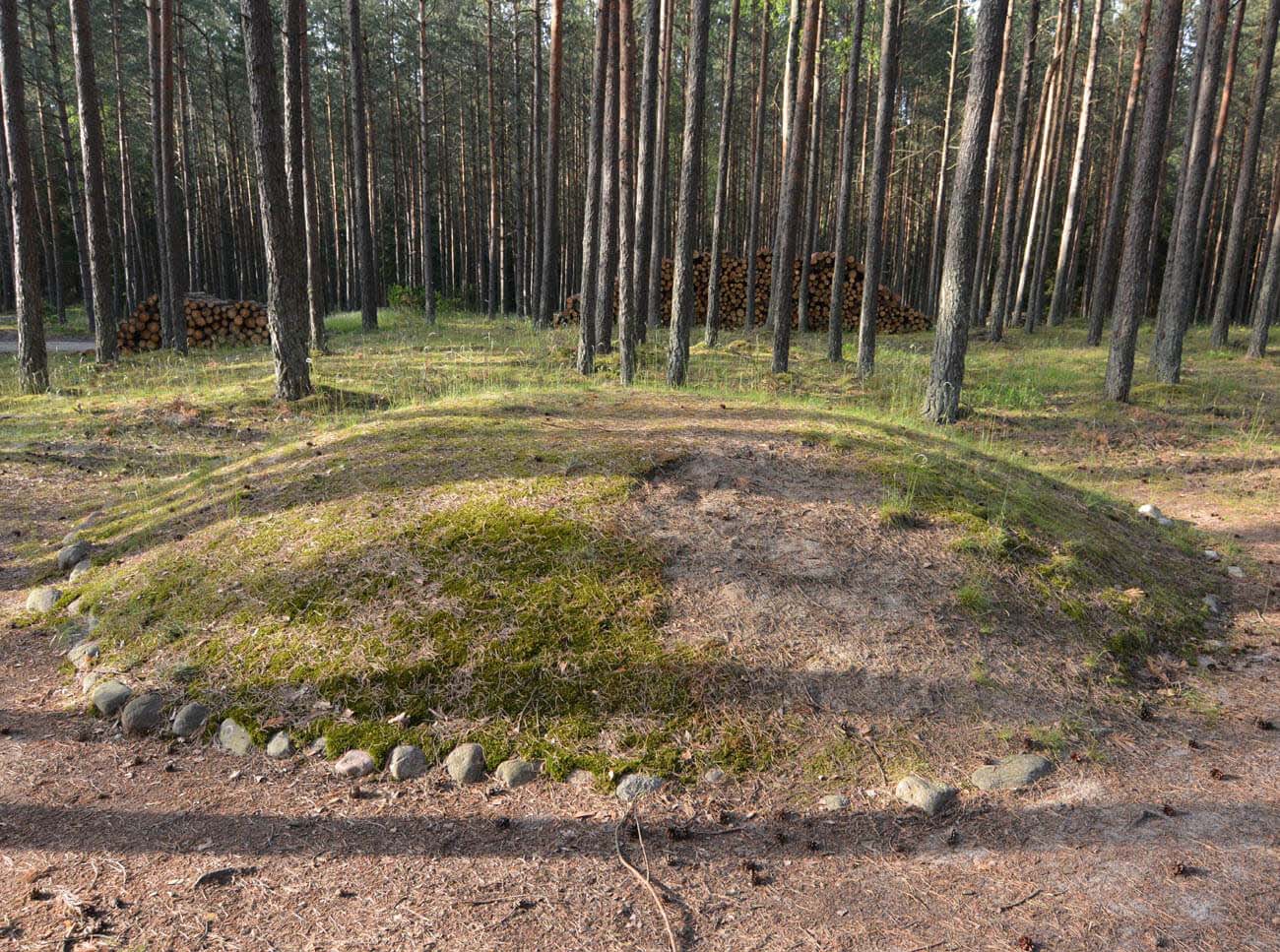History
The foundation of the necropolis in Grzybnica took place during the Roman period, i.e. in the years around 80-120 AD. Its heyday and period of most intensive use ended around 160-200 AD. It was related to the arrival of the Germanic population from Scandinavia, identified with the Goths and Gepids, who created the so-called Wielbark culture in Pomerania region. They were to come to Pomerania under the leadership of king Berig. Then, under the fifth king, Filimer, they moved through Mazowsze, the eastern part of Małopolska, Podlasie, Volhynia, Polesie, and then they came to Ukraine and as far as Romania. There, under Ermanaric, they formed a strong tribal union that threatened the neighboring Roman provinces.
Stone circles were a specific manifestation of the social life of the North Germanic population. It were cult structures which, despite the presence of a cemetery in the area, did not only play the role of a necropolis. It is believed that the circles were places of tribal and ancestral assemblies, the so-called things, and probably also places where rituals and sacrifices were performed. During these celebrations, public affairs were intertwined with magical procedures. Perhaps fortune-tellings were carried out and decisions were made with the help of sacrifices. The vicinity of the burials of deceased ancestors could create the atmosphere of a peace, necessary when taking up disputes. The neighborhood of the circles with the cemetery was a guarantee of seriousness, limited the will to draw the swords and called to consent.
According to tradition, Scandinavian things, or tribal assembly, were held in the open air, in circularly fenced places. With the consent of the gathered, resolutions were adopted, disputed cases were examined, and courts were held. In the first centuries of our era, the things were called twice a year: in late spring and late autumn, that is, at times similar to summer and winter solstices. Cattle, food and drink were sacrificed on the things, and human sacrifices were made during the main things.
Architecture
The cemetery is situated on a plateau surrounded on three sides by deeper meanders of the upper Radwa river valley. In this area, a necropolis was created with 5 stone circles, 2 barrows, and over 40 cobbled graves and flat graves.
Each stone circle consisted of a sandy ring surrounded by boulders. The stones were dug into the ground vertically, at regular intervals, while in the center of almost each ring there were single stele-shaped boulders. The two largest circles had a diameter of 37.5 meters and were placed next to each other. The other three, smaller ones, were created at some distance from each other. Two of them were 13 meters in diameter, and the smallest – 8 meters. Each circle consisted of a dozen (smaller circles) to more than thirty boulders, most of which weighed about one ton. These were erratic stones from 1.5 to 2 meters high, which were subjected to certain tooling after they had been collected. Each boulder received the shape of an obelisk with a squat base, and the wider sides flat and smooth, so that the oval face would point towards the inside of the circle. The boulders were dug up to a depth of no more than half a meter. All the boulders in some circles were surrounded by small stones at their base.
The eastern one of the largest circles (circle I) was originally made of 33 boulders placed 3.5 meters apart from each other. All of them, including the middle one, were covered with smaller field stones forming a ring at the base. The ring was made of trampled earth, on the surface of which fragments of broken clay vessels ( drinking cups) were found. In the southern part there was a triangular cobbled grave, while at the northern arch there were two piles of burned human bones. The fact that they were placed on the border of the circle suggests that it was a place where various rituals were held, and the burning of the corpses was only one of them.
The large west circle (circle II) was made of over 30 boulders. It differed from the first one in that all the stones were connected with each other by a circumferential wreath of fieldstones, tightly placed together and clearly delimiting the range of the circle. Originally there were 4 steles in its interior, with an exact positioning unknown today. In the center of the circle was a small, flattened mound covered with loose cobblestones, beneath which was a pit tomb filled with ashes from the pile, burnt human bones and relics of the bracelet and belt buckle. On the eastern side of the mound there was a burnt-out pile, orientated with its longer sides on an east-west line. The regular outline of the ash shows that the piles were erected only once for the ritual incineration of the corpse, after which the ashes remained within the circle.
In circle III, only 13 boulders were placed at intervals of 2.5 meters, at the base covered with a ring of erratic stones. In the center there was a stele with clear traces of hewing, and next to it a rectangular burial pit, 2.7×1.2 meters in size and 1.5 meters deep. The burial consisted of an unburned skeleton, devoid of equipment and grave gifts. A similar circle V was situated on the northern side, at a certain distance from the others. It consisted of 12 boulders placed 2.5 meters apart, but they were not covered with erratic stones. No burial was found in the circle, and no traces of the middle stele. On the other hand, at the level of the ground, there was a significant number of broken dishes and scissors dating back to the 2nd century.
The smallest of the circles (circle IV), located in the north-eastern corner of the necropolis, consisted of 6 boulders placed at 3.5 meter intervals. They were not lined at the base with fieldstones, but there was a stele in the center. No burial was placed within the circle.
The graves in Grzybnica were made in the ritual of skeletal and crematory burial. This is probably due to the fact that the newcomers were not a homogeneous nation, and consisted of many tribes and families, and therefore differed in rites. It also resulted from different periods of functioning. The ritual of burying unburned corpses appeared at the beginning of our era and gradually replaced the old custom of burning. It is interesting that along with the dead, no weapons or other gifts were placed in the graves situated in the circles, the deceased were usually deprived of ornaments and other attributes of social status. The poverty of those placed in circles contrasted with the equipment of burials from outside the circles, in the adjacent cemetery. This could indicate to sacrifice people of inferior status in the circles, and to bury tribe members outside the circles.
Stone structures were erected over the graves, which were arranged in certain types. The simplest form was a small cobble covering the burial pit, over which a stone stele up to 1.5 meters high was sometimes erected. Other tombstones were in the form of circular cobblestones, among which there were compact circular pavements with a diameter of up to 5 meters, circular cobbled graves surrounded by a slightly distant ring of stones with a diameter of about 10 meters, and more complex cobbled graves. One of them was a tomb with two concentric wreaths of stones and a pavement between them. The whole, about 8 meters in diameter, was additionally surrounded by a shallow ditch. Yet another one had double concentric rims with the largest diameter of 11 meters and four rows of stones radiating out from the center, resembling a wheel with spokes.
Current state
Since 1979, the area of the cemetery and stone circles has been an archaeological park with an area of approximately 3 ha. Currently, the stone structures are fully exposed, reconstructed in damaged areas and made available to visitors. The two largest circles in Grzybnica are today considered to be one of the largest structures of this type in Europe. 20 boulders have survived from the east circle, and only 17 from the west circle. Triangular tombstones, found only in southern Norway and western Sweden, are also unique in the country. They can be reached by the green trail along the left bank of the Radwia river or by a forest road from the Koszalin – Poznań road.
bibliography:
Breske A., Ellwart J., Kamienne kręgi Gotów, Gdynia 2018.
Hahuła K., Cmentarzysko z kręgami kamiennymi w Grzybnicy, Koszalin 1992.
Wołągiewicz R., Grzybnica. Kamienne kręgi Gotów, Koszalin 2000.
Wołągiewicz R., Kręgi kamienne w Grzybnicy, Koszalin 1977.


